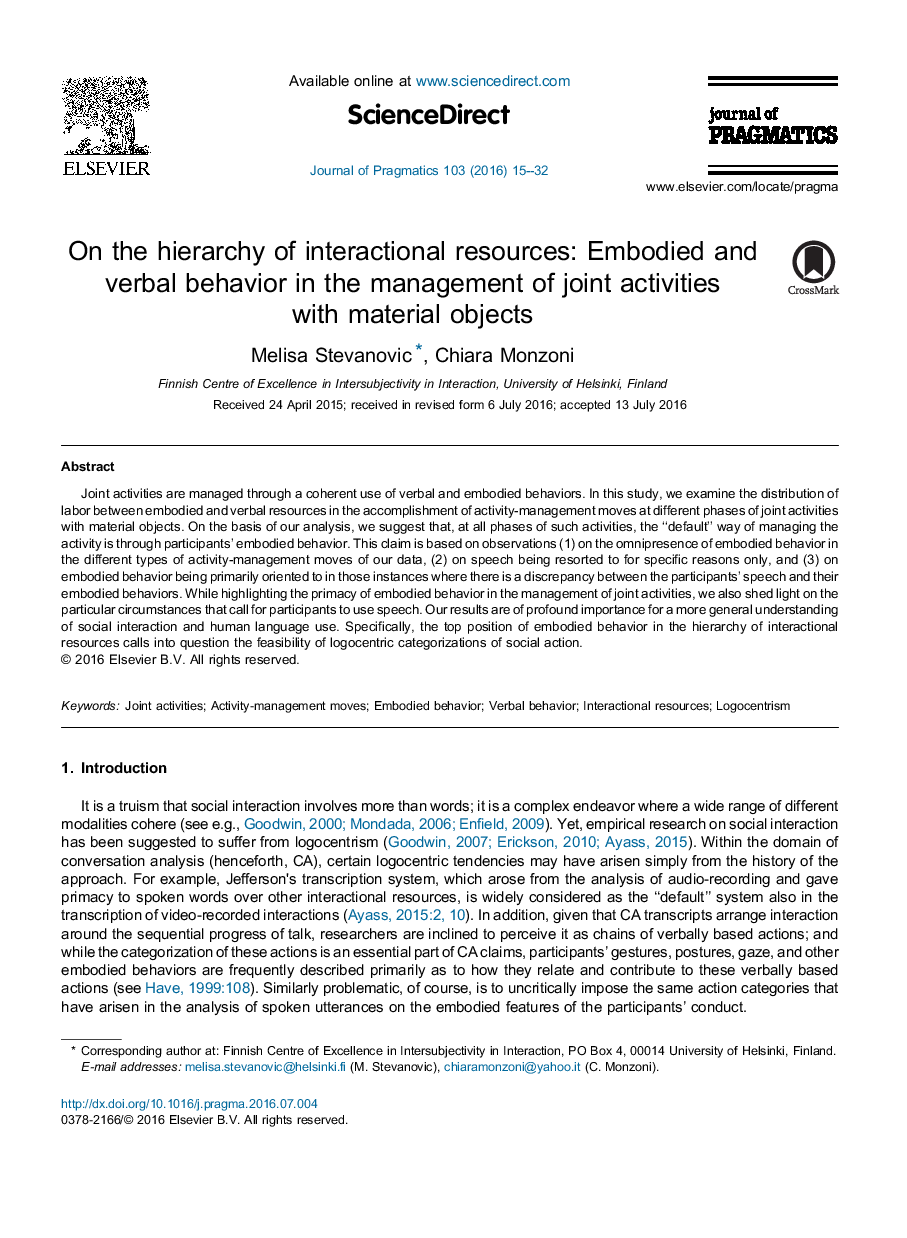| Article ID | Journal | Published Year | Pages | File Type |
|---|---|---|---|---|
| 932455 | Journal of Pragmatics | 2016 | 18 Pages |
•Joint activities are managed through a coherent use of verbal and embodied behaviors.•The default way of making an activity-management move is through embodied behavior.•Speech is resorted to for specific reasons only.•In cases of disparity, the participants look more at embodied behavior than speech.•Logocentric views on social interaction need to be revisited.
Joint activities are managed through a coherent use of verbal and embodied behaviors. In this study, we examine the distribution of labor between embodied and verbal resources in the accomplishment of activity-management moves at different phases of joint activities with material objects. On the basis of our analysis, we suggest that, at all phases of such activities, the “default” way of managing the activity is through participants’ embodied behavior. This claim is based on observations (1) on the omnipresence of embodied behavior in the different types of activity-management moves of our data, (2) on speech being resorted to for specific reasons only, and (3) on embodied behavior being primarily oriented to in those instances where there is a discrepancy between the participants’ speech and their embodied behaviors. While highlighting the primacy of embodied behavior in the management of joint activities, we also shed light on the particular circumstances that call for participants to use speech. Our results are of profound importance for a more general understanding of social interaction and human language use. Specifically, the top position of embodied behavior in the hierarchy of interactional resources calls into question the feasibility of logocentric categorizations of social action.
